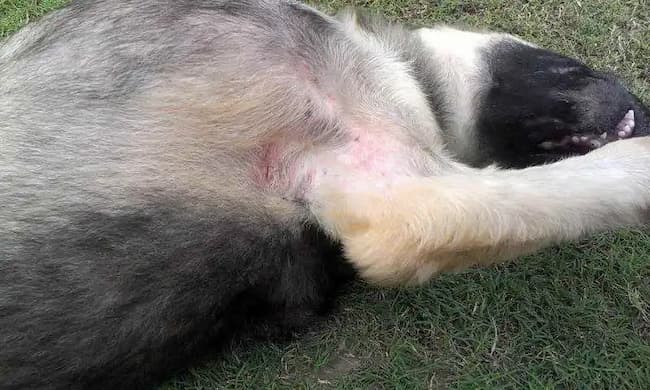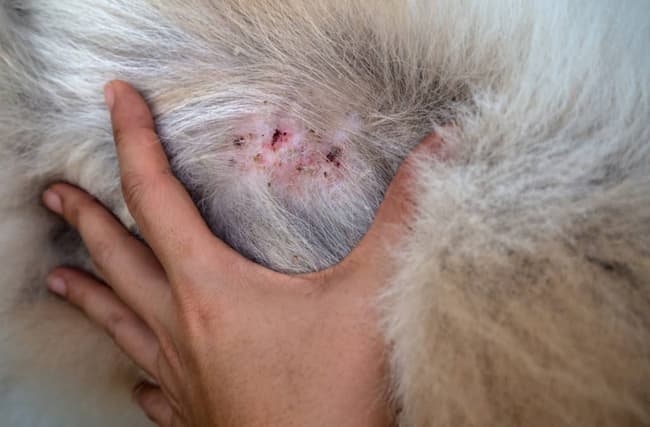Fungal German Shepherd Skin Yeast Infections: If you’re a dog owner, then you know that fungal infections are common among German Shepherds. If your German Shepherd is constantly scratching and licking his skin, he may have a fungal yeast infection. Yeast infections are caused by a type of fungus, and they can occur in any part of the body.

In this article, we will discuss the causes of fungal yeast infections in German Shepherds, as well as the symptoms and treatment options. So, if you are concerned about your dog’s skin health, read on to learn more about fungal german shepherd skin yeast infection.
Fungal German Shepherd Skin Yeast Infections
Fungal infections in German Shepherds are typically caused by fungal species of the genus Malassezia. These yeast-like fungi are found on normal skin, but they can cause infections in dogs if their populations get too high. There are a number of risk factors that make German Shepherds more prone to fungal yeast infections.
For example, German Shepherds that are overweight or have weakened immune systems are more at risk of fungal infections. Additionally, fungal yeast infections can be triggered by environmental factors such as humid or hot weather, or the presence of other skin conditions such as allergies. While fungal german shepherd skin yeast infections can cause a lot of discomfort and irritation for your dog, fortunately, they are typically easy to treat.

Treatment typically involves the use of antifungal medications, such as oral or topical anti-fungal creams and shampoos. To prevent fungal infections in your German Shepherd, it is important to keep him well-groomed and avoid exposing him to environmental triggers. With proper care and treatment, your German Shepherd can be free from fungal yeast infections in no time.
What Causes Fungal Yeast Infection in German Shepherds?
There are a number of factors that can cause fungal yeast infections in German Shepherds. Some of the most common include an overgrowth of the Candida fungus, which normally lives on your dog’s skin, and weakened immune function. Additionally, fungal yeast infections can be triggered by poor diet, stress, or other health conditions.
Not only these factors but fungal yeast infections can also be caused by your dog’s environment. For example, if they spend a lot of time outdoors or in humid conditions, this can increase their risk of fungal yeast infections. Also, know Are German Shepherds easy to potty train.
Fortunately, there are several natural treatments that can help to manage and prevent fungal yeast infections in German Shepherds. Some of the most effective include probiotics, a healthy diet, and natural anti-fungal remedies like coconut oil or tea tree oil. If your dog is showing signs of fungal yeast infection, be sure to consult with your veterinarian to help develop an appropriate treatment plan.
Fungal German Shepherd Skin Yeast Infections Symptoms
Some of the most common fungal yeast infection symptoms in German Shepherds include excessive itching, redness and inflammation, skin lesions or sores, and a bad smell. If you notice any of these symptoms in your dog, it is important to bring him to the vet for a proper diagnosis and treatment plan. German Shepherd ear infection is also a sign.

Here are the possible symptoms of fungal infections in German Shepherds:
- Excessive itching and scratching
- Redness, inflammation, or skin lesions
- Bad odor from their skin or coat
- Oozing sores or pustules on the skin
- Hair loss or changes in hair texture
- Scabs, crusts, or scales on
- Scales and crusty, flaky skin
- Thickened skin (‘elephant skin’)
- Hyperpigmentation (darkly pigmented skin)
- Chronic or recurrent otitis externa or ear infections
How is Fungal German Shepherd Skin Yeast Infection Diagnosed?
The diagnosis of fungal yeast infections in German Shepherds typically involves taking a skin scraping or biopsy and examining it under a microscope to look for fungal cells. In some cases, your veterinarian may also order blood tests or swab samples, or other imaging studies to rule out other possible causes for your dog’s symptoms.
Once your veterinarian has diagnosed your dog with fungal yeast infections, they will develop an appropriate treatment plan. This may include the use of antifungal medications such as anti-fungal creams and shampoos, or it may involve dietary changes or other natural remedies to help manage your dog’s fungal infection.
How is Fungal German Shepherd Skin Yeast Infection Treated?
There are two possible treatment options for fungal German Shepherd skin yeast infections: topical treatment and oral treatment.
Topical treatment typically involves applying a fungal cream or shampoo directly to your dog’s skin, which can help to control fungal overgrowth and heal the skin lesions. Oral treatment usually involves taking anti-fungal medications in pill form, which can effectively clear up fungal infections in most dogs.
If you suspect that your German Shepherd has a fungal yeast infection, it is important to consult with your veterinarian as soon as possible. With the right treatment plan, you can help to manage this condition and keep your dog healthy and comfortable.
Conclusion
If you are concerned about fungal German Shepherd skin yeast infections in your GSD, be sure to speak with your veterinarian for more information and treatment options. With proper care and treatment, your dog can be back to his happy, healthy self in no time. Hope this guide was helpful. Visit GermanShepherdss for more information.

